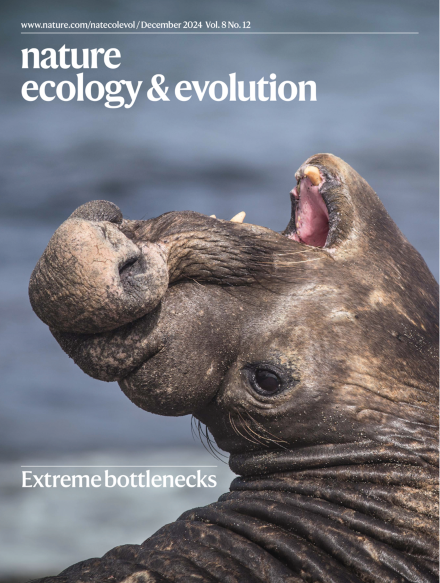Ver ítem
- xmlui.general.dspace_homeCentros Regionales y EEAsCentro Regional Patagonia SurEEA Santa CruzArtículos científicosxmlui.ArtifactBrowser.ItemViewer.trail
- Inicio
- Centros Regionales y EEAs
- Centro Regional Patagonia Sur
- EEA Santa Cruz
- Artículos científicos
- Ver ítem
The global distribution and drivers of wood density and their impact on forest carbon stocks
Resumen
The density of wood is a key indicator of the carbon investment strategies of trees, impacting productivity and carbon storage. Despite its importance, the global variation in wood density and its environmental controls remain poorly understood, preventing accurate predictions of global forest carbon stocks. Here we analyse information from 1.1 million forest inventory plots alongside wood density data from 10,703 tree species to create a spatially
[ver mas...]
The density of wood is a key indicator of the carbon investment strategies of trees, impacting productivity and carbon storage. Despite its importance, the global variation in wood density and its environmental controls remain poorly understood, preventing accurate predictions of global forest carbon stocks. Here we analyse information from 1.1 million forest inventory plots alongside wood density data from 10,703 tree species to create a spatially explicit understanding of the global wood density distribution and its
drivers. Our findings reveal a pronounced latitudinal gradient, with wood in tropical forests being up to 30% denser than that in boreal forests. In both angiosperms and gymnosperms, hydrothermal conditions represented by annual mean temperature and soil moisture emerged as the primary factors influencing the variation in wood density globally. This indicates similar environmental filters and evolutionary adaptations among distinct plant groups, underscoring the essential role of abiotic factors in determining wood density in forest ecosystems. Additionally, our study highlights the prominent role of disturbance, such as human modification and fire risk,
in influencing wood density at more local scales. Factoring in the spatial variation of wood density notably changes the estimates of forest carbon stocks, leading to differences of up to 21% within biomes. Therefore, our research contributes to a deeper understanding of terrestrial biomass distribution and how environmental changes and disturbances impact forest ecosystems.
[Cerrar]

Autor
Mo, Lidong;
Crowther, Thomas W.;
Maynard, Daniel S.;
van den Hoogen, Johan;
Ma, Haozhi;
Bialic-Murphy, Lalasia;
Liang, Jingjing;
de-Miguel, Sergio;
Nabuurs, Gert-Jan;
Reich, Peter B.;
Peri, Pablo Luis;
Zohner, Constantin M.;
Fuente
Nature Ecology & Evolution 8 (12) : 2195-2212. (December 2024)
Fecha
2024-12
Editorial
Springer Nature
ISSN
2397-334X (online)
Formato
pdf
Tipo de documento
artículo
Palabras Claves
Derechos de acceso
Abierto
 Excepto donde se diga explicitamente, este item se publica bajo la siguiente descripción: Creative Commons Attribution-NonCommercial-ShareAlike 2.5 Unported (CC BY-NC-SA 2.5)
Excepto donde se diga explicitamente, este item se publica bajo la siguiente descripción: Creative Commons Attribution-NonCommercial-ShareAlike 2.5 Unported (CC BY-NC-SA 2.5)


